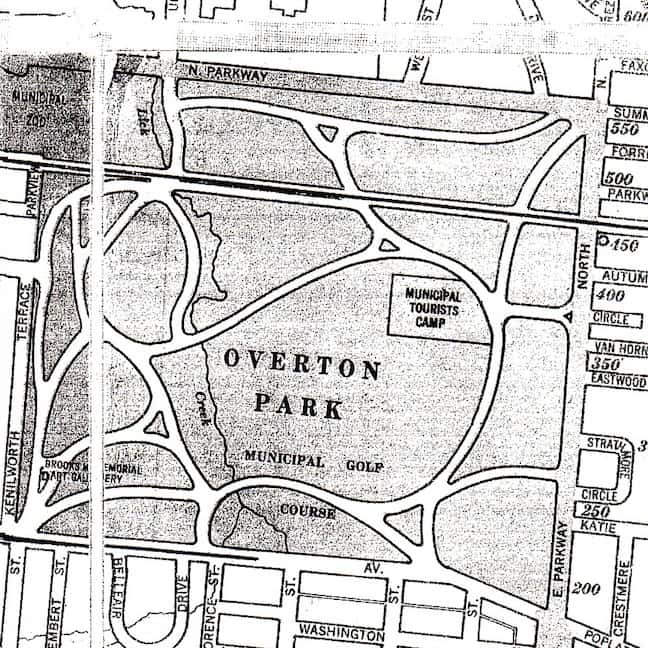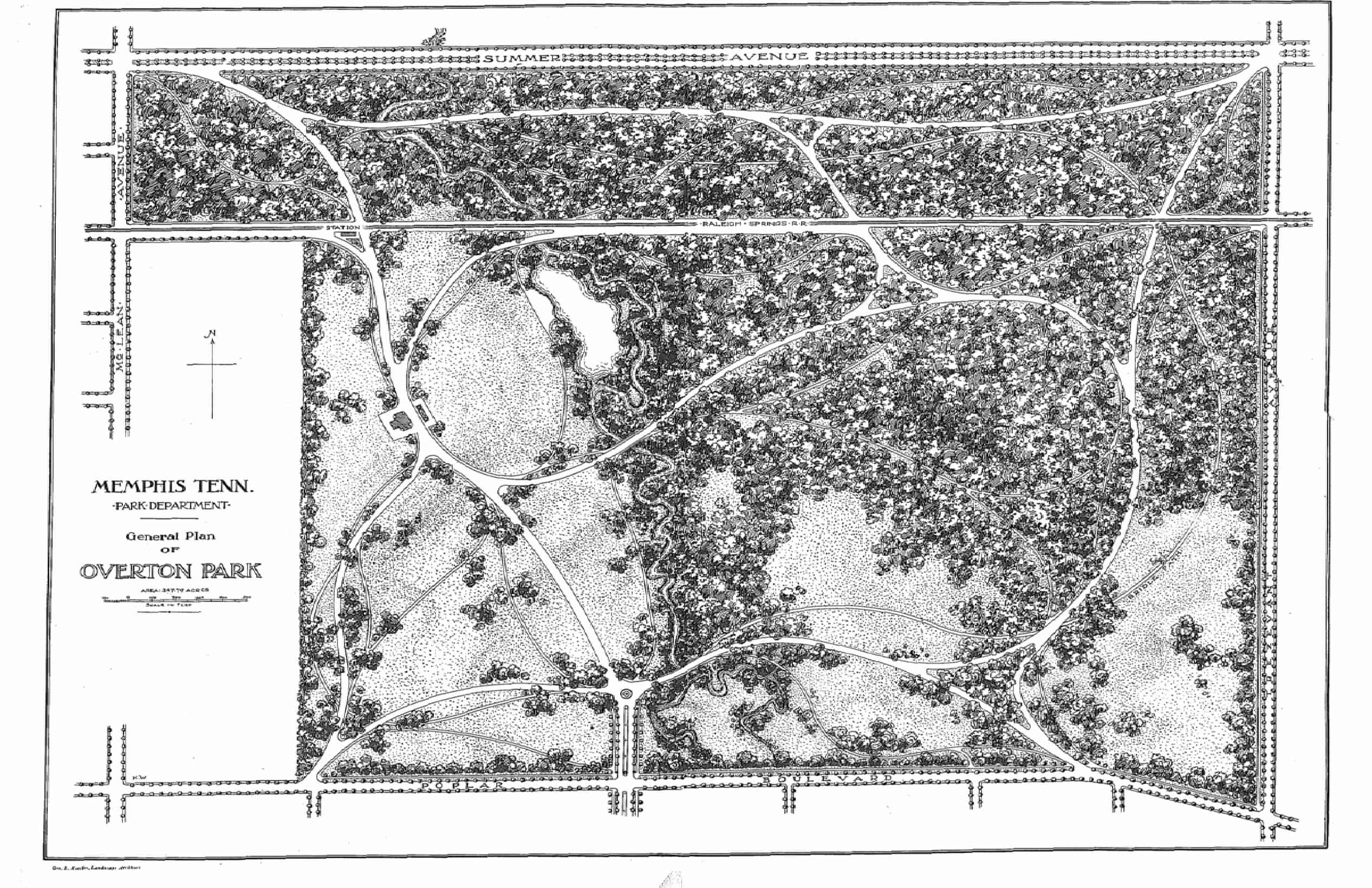Stories: “They Are the Tourists”

As we’ve started to envision the future of the park through our comprehensive park planning effort, we wanted to learn more about its past. Thanks to the gracious efforts of Dr. John T. Dulaney, today we’re sharing a glimpse of a park feature that existed for only a few years: the tourist camp of the 1920s.
Parks Superintendent C.W. Davis’s annual report for 1920 states: “During the year we set aside an area in the [Overton Park] picnic grounds, at the suggestion of Mr. Willingham for the use of automobile parties touring through Memphis. This venture proved to be a wise one and we accommodated a large number of tourists from all sections of the country who were very appreciative and loud in their praise of Memphis on this account.”
Maps of the area show the camp located just past the East Parkway Pavilion in the interior of the Old Forest. As the camp grew over its first five years, it included electric wiring and plumbing. Superintendent Davis’s annual report for 1923 states, “The old tourists camp was inadequate and no accommodations – absolutely an eye sore from the main drive East of the [Overton] Park. At the suggestion of Mr. Willingham we laid out a camp in lots of 25 x 25 with road surrounding same. Also enlarged comfort station, installing shower baths for both men and women, electric lights – In fact we now have one of the most modern camps in the South – small but adequate. During the year 1923 we had 845 Tourists cars to visit our camp and never less than two people and as many as five per car.”
Park Commission minutes from November 1925 state, “It was the unanimous decision of the Board to abolish the 3 free days [at the Tourist Camp], effective January 1st, 1926, and make a charge of 50 cents per day, to all tourists, for the first 5 days, and $1.00 per day for the next 5 days. Time limit allowed campers, 10 days. Order for new permit books, with above change in rules, was approved.”
But the camps were not long for the world. Park Commission minutes from November 1928 include a letter from the Auto Club of California “desiring information relative to continuation of Tourist Camp in Overton Park. Secretary was instructed to inform the Club that the camp had been discontinued.” The camps were replaced by several other park features, including archery lanes and a bird sanctuary with feeding stations, before the area in question became what we consider a part of the Old Forest no different than any other.

Glimpses into the past show us that the story of the Old Forest is not as simple as we might think. Though from a 100-year distance, it might appear that the Old Forest is true “virgin forest” that has never been cut or altered, the history of the tourist camp tells a different story. (So does the existence of the Raleigh Springs rail line that cut through the forest’s northern half at the time Overton Park was being conceptualized.) The camp’s boundaries almost certainly stretched beyond the paved roads and into the present-day trail system in the forest interior. George Kessler’s 1901 plan for Overton Park shows this area as well as the current East Parkway picnic area as forested; 1925 photos from the Commercial Appeal instead show a grassy area bordered by trees. When was this area cleared, and how far into the forest did the clearing stretch?
Did the disturbed ground help give rise to an eventual invasion of kudzu, which dominated this area of the forest before the City of Memphis made a concerted effort to remove it several decades ago? Did the abandonment of the active cultural uses in this area help give rise to a new class of trees in the 80-year age range that our research in the Old Forest has identified? Does the obvious fascination with motor vehicle travel shed light on the later enthusiasm by civic leaders for the highway proposed to run through Overton Park?
It’s a different lens than the one we’ve grown accustomed to using on the Old Forest, which has been closed to vehicle traffic for decades now. Fascination with fossil fuel-burning cars has given way to thinking through ways we can reduce consumption. The story of the Overton Park tourist camp is a reminder that our day-to-day choices have a far-reaching effect on our beloved wild spaces.
If you’d like to read more, the camp was the subject of a lengthy Commercial Appeal article in August 1925 (which seems to double as a love letter to the Ford Motor Company!). The transcript of that article is provided at this link.
Many thanks to Dr. Dulaney for uncovering these materials and sharing them with us!



